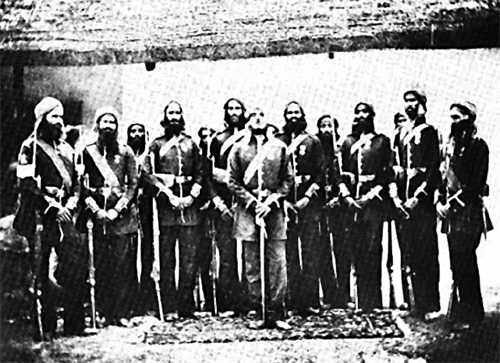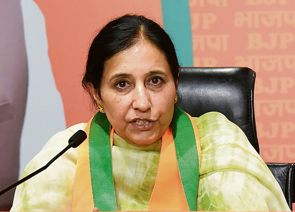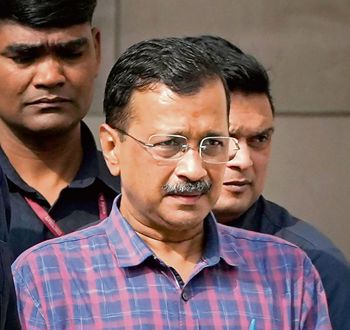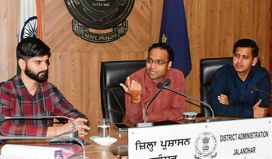
Forgotten: The 21 who fell at Saragarhi should be treated as martyrs.
KC Singh
SEPTEMBER 12 was the anniversary of the Battle of Saragarhi, fought in 1897. Twenty-one Sikh soldiers of the British army isolated at a signalling post, between two better fortified forts and between which only they could maintain communication, during a tribal uprising were singled out for attack, as precursor to attacks on forts. Outnumbered by one to perhaps a hundred, or more, they fought to the last man. Each one was awarded the Indian Order of Merit, the predecessor to the Victoria Cross, created only in 1912. Their selfless defence bought time for reinforcements to come to the rescue of neighbouring forts.
I spoke at the Royal United Services Institute, London (on September 12), at a function culminating a three-day commemoration of Saragarhi, including a polo match. It is done each year under the patronage of the Saragarhi Foundation and the Anglo-Sikh Heritage Trust. That in India only the Sikh Regimental Centre has a function merits consideration.
Attending the RUSI functions, amongst others, were Lord Inderjit Singh of Wimbledon, who gave fulsome praise after my lecture, and Field Marshal Sir John Chappel, former British Chief of staff. What drew me to the function was also the memory of my maternal grandfather, Sardar Bahadur Risaldar Kunda Singh, also having received an IOM a little before Saragarhi on the same front.
I related this great last stand to a larger context: the role of Pashtuns in Indian history and complex thicket of tribal custom, called Pakhtunwali, radical Islam and geopolitics. Historically, Pashtuns have been both a buffer against Turko-Mongol hordes from Central Asia and custodians of the trade route, among other things, bringing the finest Central Asian horses to India. But they also often partnered invaders and even ruled India. Thus the maxim of traditional friendship between India and the Afghans is really a post-freedom movement construct.
The Lodhi dynasty, of Afghan origin, ruled from Delhi (1451 to 1526). The Mughals came via Kabul and used Afghan mercenaries. However, once in power, they realised that to protect against invasions, they had to have an Afghan policy of forward defence. Akbar, in fact, looked at the Kabul-Kandahar axis as vital to defending India. The Mughals did not always succeed in controlling both cities, but their strategy was to do so directly or through allies.
Maharaja Ranjit Singh, ruling from 1801-39, brought the much-needed stability to Punjab and the trans-Indus areas, as with the collapse of the Mughal empire, first Nadir Shah, the ruler of Iran, and then his general Ahmad Shah Durrani, more popularly known by his last name Abdali, mounted raids on India. Abdali’s Punjab raids, particularly to despoil the Golden Temple, are etched in Sikh memory.
What is not remembered is that Wahabbi Islam had already arrived in India at the beginning of the 19th century and preached out of Madrassah-i-Rahimiya, set up by Shah Waliullah in Delhi to propagate a spartan and literalist version of Islam. His charismatic follower, Syed Ahmad, proselytised in India and then left for the Pashtun-held tribal frontier in the 1820s. In 1826, he issued a fatwa for jihad against the Sikhs, who were then under Ranjit Singh-ruled Punjab. He was given shelter by Pashtun tribes, along with his followers from Patna, etc. commonly called Hindustanis. He was also declared Amir ul-Momoneen, exactly as Mullah Omar became in the 1990s with the rise of the Taliban.
However, while the Sikh army hunted down the 19th century Amir at the Battle of Balakot in 1831, the NATO- led ISAF forces could only locate and eliminate Osama bin Laden but not Mullah Omar. The Battle of Saragarhi was fought post Sikh kingdom’s collapse and British annexation of Punjab. The British then had to develop a frontier policy, thus establishing the Durand Line, almost along the salient controlled by Ranjit Singh. In their case, the need was not just to stabilise a frontier but to ensure that Russians did not intrude south, in what was called the Great Game.
That game got replayed a century later when USSR troops entered Afghanistan in December 1979. The US was already at its wits’ end over the Islamic revolution earlier the same year, having lost close ally Shah of Iran. Saudi Arabia was also rattled by the followers of a self-proclaimed Mahdi capturing the Mecca masjid. A puritanically Islamist Gen Zia-ul-Haq, the US and Saudis then used the Afghans’ religious gullibility, as had been done by Syed Ahmad in the 19th century, and xenophobia against foreign powers trying to control them to create the monster of jihad.
Thus the 21 Sikhs did not die in vain or merely out of loyalty to their colonial employers. They were resisting bigotry and radicalisation that lingers in the Af-Pak region. When countered it becomes dormant or simply trans-mutates and travels to other theatres, as happened first with the rise of Zarqavi-led Sunni resistance in Iraq around 2005-6, and now Syria.
The game in Afghanistan today is germane for replay, only the players are different. My London lecture was titled: “The Great Game Replayed”. Now India and the US as partial allies opposing Pakistan and its arm’s length ally China. A nationalist and assertive Prime Minister in Delhi has resources far greater than India had in the 1980s when India was on the losing Soviet side. Proof positive of the US’ evolving position on Pakistan is the drone killing of the newly anointed leader of the Taliban, Mullah Mansour. The US tracked him as he re-entered Balochistan from Iran, travelling on a fake Pakistani passport and then took him out as he travelled by car in Balochistan. The gloves are off and the US is signalling fatigue with Pakistani duplicity in working with internationally listed terror groups like the Haqqanis.
PM Modi has rightly begun, albeit belatedly, to recognise past acts of valour by Indian soldiers in larger causes, albeit in a colonial army, like defeating Nazi Germany or Imperial Japan or countering the Pashtun mischief across a vital frontier. The 21 who died at Saragarhi thus must be treated as martyrs in defence of India. As George Santayana said: “Those who cannot remember the past are condemned to repeat it.”
— The writer is a former Secretary, Ministry of External Affairs



























